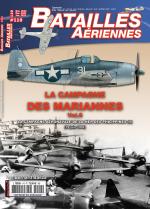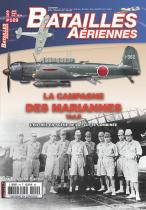In the spring of 1945, the US high command doubted a quick victory over Japan, let alone a victory that could be achieved by the Army Air Force alone. He was cooled by the promises of the same kind about victory over Nazi Germany made by the Army Air Force Combat Command and which led him to agree to pharaonic human, material and financial efforts without avoiding the land invasion. In June 1945, in Washington, apart from Arnold, LeMay and a few relatives, everyone thought it was going to be the same in the Pacific ...
However, at the beginning of June, when the "Fire Blitz" ends, the 20th Air Force finds itself in the position of the boxer who sees that his opponent is "groggy" and who says to himself that the victory by "Knock Out" is within range as long as it prevents it from recovering and therefore hits hard and fast until it falls or gives up. This is precisely the spirit of the “Empire” plan which, after the destruction of the six largest cities of the archipelago (the main military-industrial complexes), plans to subject the same fate to 25 other smaller cities but , they too, industrialized. The plan of XXI Bomber Command, underlines the importance of the cumulative effect necessarily produced by many raids in a short period of time and determines the list of targets so as to continue the destruction of the Japanese war industry while creating a feeling of terror among the civilian population. It is this phase of the bombing campaign of XXI Bomber Command that recounts in this 7th opus, as abundantly illustrated as the previous ones and rich in anecdotes and testimonies.
We talk about it in the press and on the Internet:
With this episode we come to June 1, 1945, the Japanese continue to fight and the B-29s ... have mechanical breakdowns. And this until July 28 ...
The text continues a tradition now well established with the history of the missions interspersed with testimonies from both sides.
In appendix:
-the detail of the losses of the 20th Air Force (in an interesting way the author underlines how difficult the work of the historian is and how, with imprecise statistics at the beginning, one can arrive at very divergent results according to the sources chosen ... a priori as reliable and official as the other!)
-Identification and production of B-29 series
Iconography (this is perhaps the most important thing for model makers)
B-29: 62 B / W, 4 col. , 9 profiles
P-51D: 6 B / W, 2 profiles
A6M: 7 B / W
Ki 100: 4 B / W, 3 profiles
J1N1-S, Ki-45, P1Y2: 1N / B
Ki 61: 3 B / W, 1 profile
Ki 44: 4 B / W
Ki 84: 3: B / W
Annotated maps, plans, aerial views: 14
An interesting episode, especially for the B-29s, but which also appears as a transitional episode before the atomic bombings in August. © Modelstories 2021.








